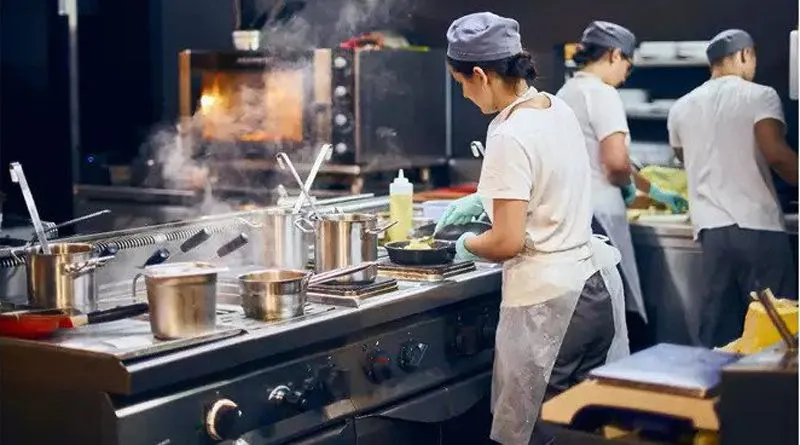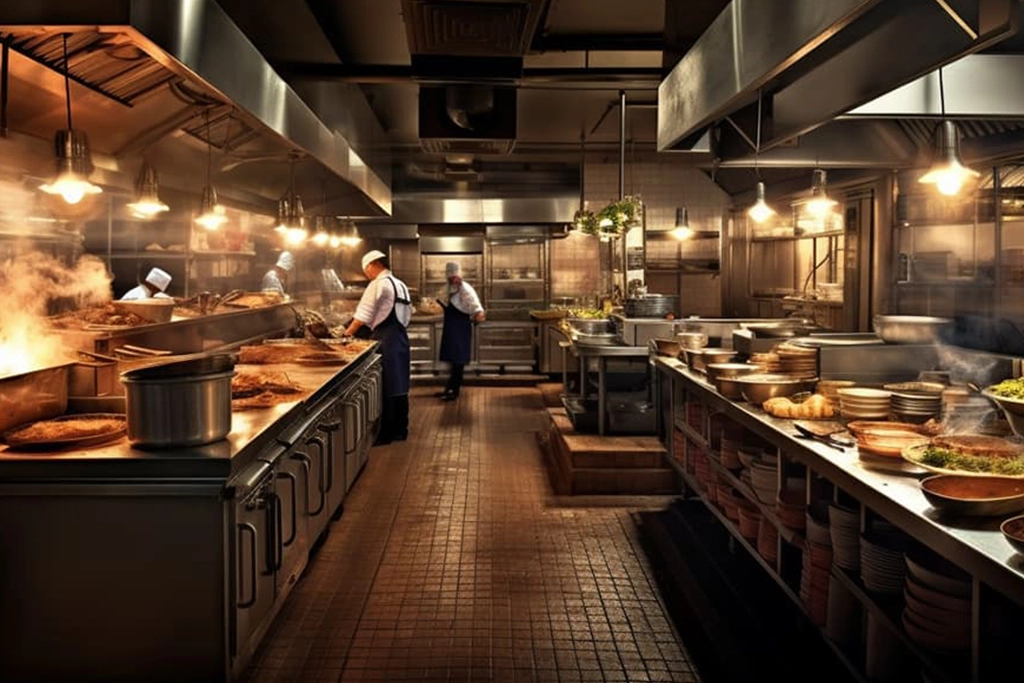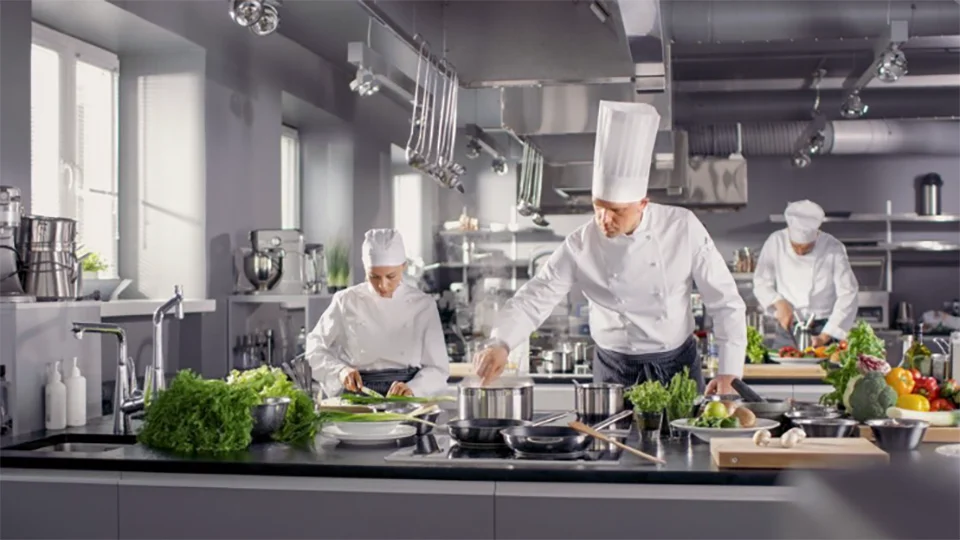The Cloud Kitchen Concept – Revolutionizing the Restaurant Industry
The food and beverage industry are undergoing a remarkable transformation, with cloud kitchens leading the way. These virtual kitchens have redefined how restaurants operate by focusing solely on food delivery, eliminating the need for dine-in space. As the demand for food delivery continues to grow, the cloud kitchen concept has gained popularity for its cost efficiency, scalability, and adaptability.
In this article, we’ll dive into what cloud kitchens are, their advantages over traditional restaurants, and how they represent the future of the dining industry.
What Are Cloud Kitchens?
A cloud kitchen, also known as a ghost kitchen, virtual kitchen, or dark kitchen, is a professional food preparation facility that focuses exclusively on producing food for delivery. Unlike traditional restaurants, cloud kitchens have no physical dining area, waitstaff, or direct interaction with customers. Instead, they rely on online platforms and third-party delivery services like UberEats, Talabat, or Deliveroo to manage orders and deliver food to customers’ doorsteps.
In a cloud kitchen model, multiple restaurant brands can operate under one roof, reducing operational costs. Some cloud kitchens operate their own brands, while others lease kitchen space to established restaurants looking to expand their delivery reach without the overhead costs of opening a new physical location.
How Are Cloud Kitchens Different from Traditional Restaurants?
The primary distinction between cloud kitchens and ordinary restaurants is the absence of a physical dining space. Traditional restaurants invest heavily in prime real estate, interior design, and customer service staff to provide a dining experience. Cloud kitchens, on the other hand, focus entirely on food production for online orders, eliminating the need for high-cost storefronts.
In a traditional restaurant, the customer experience includes ambiance, face-to-face interaction with staff, and service quality. For cloud kitchens, the customer experience happens online through apps or websites. The success of a cloud kitchen largely depends on food quality, delivery speed, and user-friendly online platforms. Cloud kitchens prioritize efficiency and quick turnover of orders over creating a physical experience for customers.
read more
cost of opening a cloud kitchen – all information about coast
what is a cloud kitchen All the information about cloud kitchens
The Most Important Tips for Success in Cloud Restaurants
Advantages of Cloud Kitchens
The cloud kitchen model offers numerous benefits that make it an appealing choice for both established restaurateurs and new entrepreneurs.
1 Lower Overhead Costs
One of the most significant advantages of cloud kitchens is their reduced operational costs. Traditional restaurants require expensive real estate in high-traffic areas, front-of-house staff, décor, and utilities for customer service. In contrast, cloud kitchens only need kitchen space, equipment, chefs, and delivery partners. This reduction in overhead allows cloud kitchens to operate with higher profit margins.
2 Flexibility and Scalability
Cloud kitchens offer greater flexibility and scalability compared to traditional restaurants. Since there’s no need to manage a physical location, expanding or modifying menus can be done quickly. Businesses can experiment with new cuisines or create multiple brands within the same kitchen. Additionally, they can enter new markets by renting kitchen spaces in different areas without the burden of setting up a full-fledged restaurant.
Data-Driven Operations
Because cloud kitchens operate entirely through online platforms, they can collect and analyze customer data with ease. This data can help owners make informed decisions about menu items, pricing, and promotions based on customer preferences and feedback. In contrast, traditional restaurants rely more on in-person feedback, which can be less comprehensive.
4 Faster Adaptation to Market Trends
The fast-paced food industry requires restaurants to adapt quickly to changing consumer preferences. Cloud kitchens have the agility to test and adjust their offerings based on trends like veganism, plant-based diets, or ethnic cuisines. With fewer constraints than physical restaurants, cloud kitchens can pivot their menus quickly to meet demand, staying ahead of competitors.
5 Increased Delivery Efficiency
Cloud kitchens are designed for delivery, making them more efficient in handling high volumes of online orders. They can optimize workflows to ensure that food is prepared and dispatched quickly, improving customer satisfaction. Traditional restaurants often have to juggle dine-in and delivery services, which can lead to longer wait times for delivery orders.
The Future of Restaurants Cloud Kitchens as the New Norm
As online food delivery continues to grow, cloud kitchens are expected to play a dominant role in the future of the restaurant industry. The COVID-19 pandemic accelerated the demand for food delivery, and this trend shows no signs of slowing down. Here’s how cloud kitchens are shaping the future:
1 Increased Reliance on Technology
Technology will be at the core of cloud kitchen operations. Automated kitchen equipment, artificial intelligence (AI) for menu optimization, and delivery drones or robots could further streamline processes. Smart kitchens will use AI to predict demand, optimize delivery routes, and reduce food waste.
2 Expansion of Virtual Restaurant Brands
Cloud kitchens allow the creation of multiple virtual brands under one roof. This enables businesses to cater to different customer segments without the need for separate physical locations. Virtual brands can test new concepts, cuisines, and markets with minimal risk, contributing to the rise of diverse online dining options.
3 Sustainability and Innovation
Cloud kitchens are likely to embrace sustainability through eco-friendly packaging and waste reduction strategies. With growing awareness of environmental issues, cloud kitchens will need to innovate in areas like packaging, food sourcing, and energy-efficient kitchen operations.
4 Integration with Grocery Delivery and Meal Kits
As the lines between restaurants and grocery delivery blur, cloud kitchens may integrate with grocery delivery services or offer meal kits. Customers could order pre-prepped ingredients from a cloud kitchen to cook at home, combining convenience with fresh food options.
5 Global Expansion
Cloud kitchens will expand globally, providing entrepreneurs the opportunity to enter international markets without the need for physical expansion. With cloud kitchens, restaurateurs can serve multiple cities and countries by simply renting kitchen spaces in those areas, opening up new revenue streams.
Conclusion Cloud Kitchen
Cloud kitchens have revolutionized the restaurant industry by offering a more efficient, flexible, and data-driven approach to food production and delivery. With lower costs and the ability to quickly adapt to market trends, cloud kitchens provide an appealing alternative to traditional restaurant models. As technology and consumer preferences evolve, cloud kitchens are set to become a key player in the future of dining, delivering meals faster, fresher, and more sustainably than ever before.






